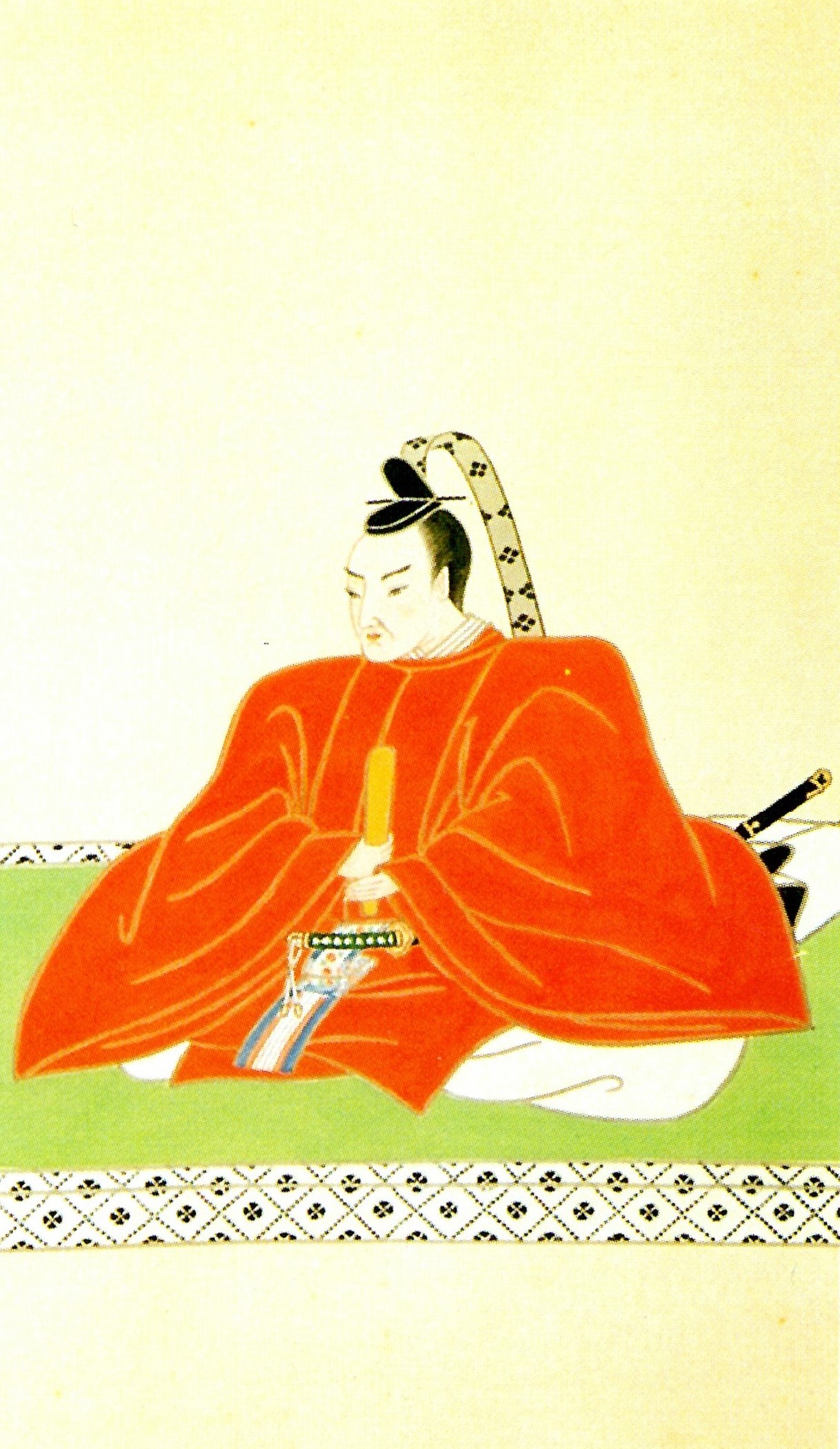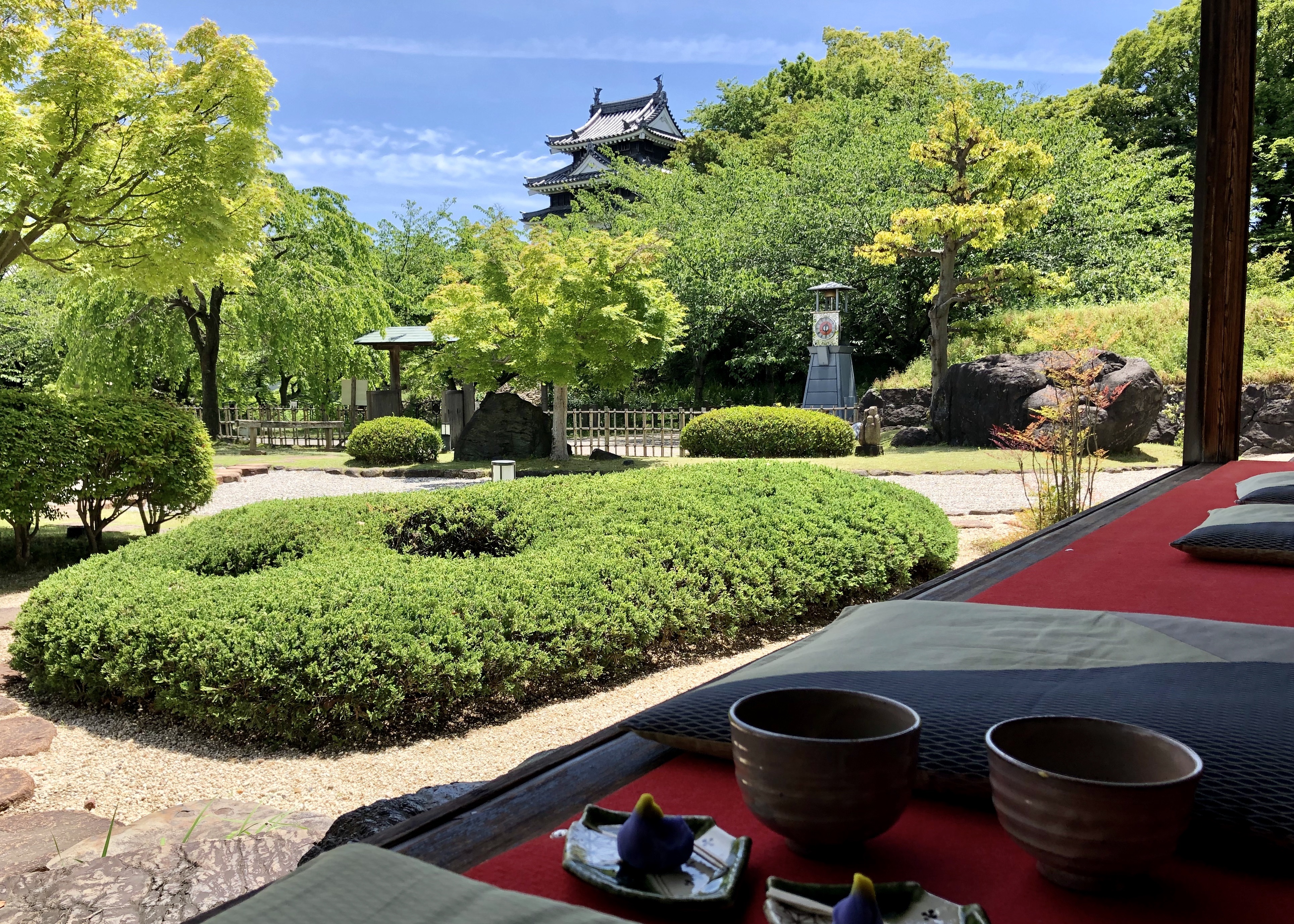|
Itakura Shigemune
was a Japanese ''daimyō'' of the early Edo period.Meyer, Eva-Maria"Gouverneure von Kyôto in der Edo-Zeit". Universität Tübingen (in German). Shigemune's daimyō family claimed descent from the Shibukawa branch of the Seiwa Genji. The Itakura identified its clan origins in Mikawa Province. The descendants of Itakura Katsushige, including the descendants of his eldest son Shigemune, were known as the elder branch of the clan. Papinot, Edmond. (2003)''Nobiliare du Japon'' -- Itakura, pp. 16–17 Papinot, Jacques Edmond Joseph. (1906). ''Dictionnaire d’histoire et de géographie du Japon.'' (in French/German). In 1622, his service was rewarded by his assignment as daimyō of Sekiyado Domain. Shigemune's court title was '' Suō no Kami''. Biography Shigemune was the eldest son of Itakura Katsushige. He was chosen to be one of Tokugawa Ieyasu's pages at a young age, and Ieyasu is said to have liked Shigemune greatly. Shigemune took part in both the Battle of Sekigahara and ... [...More Info...] [...Related Items...] OR: [Wikipedia] [Google] [Baidu] |
Sekiyado Domain
was a Han (Japan), feudal domain under the Tokugawa shogunate of Edo period Japan, located in Shimōsa Province (the northern portion of Chiba Prefecture and southern portion of Ibaraki Prefecture in modern-day, Japan). It was centered on Sekiyado Castle in what is now the city of Noda, Chiba. Prime Minister of Japan, Prime Minister Baron Kantarō Suzuki, Suzuki Kantarō was born as the son of a samurai of Sekiyado Domain. History Sekiyado is located at the confluence of the Tone River and the Edo River, and was thus a strategic location controlling river traffic in the northern Kantō region, as well as the northeastern approaches to Edo. Following the Siege of Odawara (1590), Battle of Odawara in 1590, the Kantō region by was assigned by Toyotomi Hideyoshi to Tokugawa Ieyasu, who appointed his half-brother Matsudaira (Hisamatsu) Yasumoto as ''daimyō'' of the newly formed Sekiyado Domain, with revenues of 20,000 ''koku''. His revenues were increased to 40,000 ''koku'' in 1591. ... [...More Info...] [...Related Items...] OR: [Wikipedia] [Google] [Baidu] |
Siege Of Osaka
The was a series of battles undertaken by the Japanese Tokugawa shogunate against the Toyotomi clan, and ending in that clan's destruction. Divided into two stages (winter campaign and summer campaign), and lasting from 1614 to 1615, the siege put an end to the last major armed opposition to the shogunate's establishment. The end of the conflict is sometimes called the , because the era name was changed from Keichō to Genna immediately following the siege. Background When Toyotomi Hideyoshi died in 1598, Japan came to be governed by the Council of Five Elders, among whom Tokugawa Ieyasu possessed the most authority. After defeating Ishida Mitsunari in the battle of Sekigahara in 1600, Ieyasu essentially seized control of Japan for himself, and abolished the Council. In 1603, the Tokugawa shogunate was established, with its capital at Edo. Hideyori and his mother Yodo-dono were allowed to stay at Osaka Castle, a fortress that had served as Hideyoshi's residence and he f ... [...More Info...] [...Related Items...] OR: [Wikipedia] [Google] [Baidu] |
Harold Bolitho
Harold Bolitho (3 January 1939 – 23 October 2010) was an Australian academic, historian, author and professor emeritus in the Department of East Asian Languages and Civilizations at Harvard University. The name Bolitho is of Cornish origin. Career Bolitho received his B.A. from the University of Melbourne in 1961 and his M.A., M.Phil, and PhD degrees from Yale. In 1985, Bolitho was granted tenure as a Professor of Japanese History at Harvard.Georges, Christopher ''et al.' "Waiting for the White Smoke: A Peek at Harvard's Tenure Searches,"''Harvard Crimson.'' 1 December 1984. He was Director of the Edwin O. Reischauer Institute of Japanese Studies from 1988 through 1991. Formerly, Bolitho was a member of the faculty of Monash University and he taught at the University of Melbourne in Victoria, Australia. Bolitho was a Visiting Professor at the Research Institute for Humanities at the University of Kyoto in 1989; and he has been a visiting lecturer at the University of Pennsy ... [...More Info...] [...Related Items...] OR: [Wikipedia] [Google] [Baidu] |
Ōta Sukemune
was a daimyō during early-Edo period Japan. His courtesy title was '' Bitchu no Kami.'' Biography Ōta Sukemune was the second son of Ōta Shigemasa, a Sengoku period samurai descended from Ōta Dōkan, who entered into the service of Tokugawa Ieyasu after the fall of the Go-Hōjō clan in 1590. Shigemasa's elder sister, Eisho-in, later became one of Ieyasu's concubines. When Sukemune was seven years old in 1606, he was introduced to Tokugawa Ieyasu in a formal audience. On the death of his father in 1610, he was confirmed as head of the Ōta clan and inherited his father's holdings of 5,600 ''koku'' in the Kantō region. In 1615, he received the courtesy title of '' Settsu-no-kami'' and lower 5th Court Rank. He continued in Ieyasu's service, receiving various minor commissions within the hierarchy of the Tokugawa shogunate, and in 1633 became one of the first group of ''wakadoshiyori''. In 1635, Sukemune was rewarded with properties in Shimotsuke Province with an assessed ... [...More Info...] [...Related Items...] OR: [Wikipedia] [Google] [Baidu] |
Honda Toshinaga
was a daimyō of the early to mid Edo period, Japan, who ruled Okazaki and Yokosuka domains, and was finally transferred to Murayama Domain in Dewa Province. Toshinaga was the 6th son of Honda Tadatoshi, daimyō of Okazaki Domain. His mother was a daughter of Inoue Masanari, daimyō of Yokosuka Domain. Toshinaga succeeded to clan leadership upon his father's death in 1645; however, he received only 50,000 of the 60,000 ''koku'' that had comprised Okazaki Domain under Tadatoshi's rule; the remaining 10,000 ''koku'' was divided between his brothers Honda Sukehisa and Honda Toshirō. Toshinaga was transferred to Yokosuka Domain during the same year. He held the courtesy title of junior 5th court rank, lower grade (''ju go i no ge'' 従五位下), and ''Echizen no Kami'' and was married to a daughter of Matsudaira Masatsuna, daimyō of Tamanawa Domain in Sagami Province. The Tokugawa shogunate confiscated Yokosuka Domain on February 23, 1682, charging Toshinaga with gross misc ... [...More Info...] [...Related Items...] OR: [Wikipedia] [Google] [Baidu] |
Toda Ujikane
was a Japanese ''daimyō.'' In 1617, he helped build the Amagasaki Castle was a flatland type Japanese castle located in the city of Amagasaki, Hyōgo Prefecture, Japan. The castle was the headquarters of Amagasaki Domain, which ruled this portion of northern Settsu Province under the Tokugawa shogunate of Edo Perio .... References , - , - Daimyo 1576 births 1655 deaths Deified Japanese people {{daimyo-stub ... [...More Info...] [...Related Items...] OR: [Wikipedia] [Google] [Baidu] |
Nishio, Aichi
is a city located in Aichi Prefecture, in the Chūbu region of Japan. , the city had an estimated population of 169,984 in 65,553 households, with a population density of 1,054 persons per km². The total area of the city was . It is a regional commercial and manufacturing center and the country's leading producer of powdered green tea. Geography Nishio is situated on the northern coast of Mikawa Bay on the Pacific Ocean in southern Aichi Prefecture. The city lies along the eastern bank of the Yahagi River. Sheltered by Chita Peninsula and Atsumi Peninsula, the local climate is mild. Parts of the city lie within the borders of the Mikawa Wan Quasi-National Park Climate The city has a climate characterized by hot and humid summers, and relatively mild winters (Köppen climate classification ''Cfa''). The average annual temperature in Nishio is 15.7 °C. The average annual rainfall is 1596 mm with September as the wettest month. The temperatures are highest on average ... [...More Info...] [...Related Items...] OR: [Wikipedia] [Google] [Baidu] |
Kyoto
Kyoto (; Japanese: , ''Kyōto'' ), officially , is the capital city of Kyoto Prefecture in Japan. Located in the Kansai region on the island of Honshu, Kyoto forms a part of the Keihanshin metropolitan area along with Osaka and Kobe. , the city had a population of 1.46 million. The city is the cultural anchor of a substantially larger metropolitan area known as Greater Kyoto, a metropolitan statistical area (MSA) home to a census-estimated 3.8 million people. Kyoto is one of the oldest municipalities in Japan, having been chosen in 794 as the new seat of Japan's imperial court by Emperor Kanmu. The original city, named Heian-kyō, was arranged in accordance with traditional Chinese feng shui following the model of the ancient Chinese capital of Chang'an/Luoyang. The emperors of Japan ruled from Kyoto in the following eleven centuries until 1869. It was the scene of several key events of the Muromachi period, Sengoku period, and the Boshin War, such as the Ōnin War, the Ho ... [...More Info...] [...Related Items...] OR: [Wikipedia] [Google] [Baidu] |
Timon Screech
Timon Screech (born 28 September 1961 in Birmingham) was professor of the history of art at the School of Oriental and African Studies (SOAS), University of London from 1991 - 2021, when he left the UK in protest over Brexit. He is now a professor at the International Research Center for Japanese Studies (Nichibunken) in Kyoto. Screech is a specialist in the art and culture of early modern Japan. In 1985, Screech received a BA in Oriental Studies (Japanese) at the University of Oxford. In 1991, he completed his PhD in art history at Harvard University. As well as his permanent posts, he has been visiting professor at the University of Chicago, Heidelberg University, and Tokyo University of Foreign Studies and guest researcher at Gakushuin University and Waseda University in Japan, and at Yale, Berkeley and UCLA in the USA. His main current research project is related to the deification of the first Tokugawa shogun, Ieyasu, in 1616-17, and his cult as the Great Avatar. In July 2 ... [...More Info...] [...Related Items...] OR: [Wikipedia] [Google] [Baidu] |
Tokugawa Yoshimune
was the eighth ''shōgun'' of the Tokugawa shogunate of Japan, ruling from 1716 until his abdication in 1745. He was the son of Tokugawa Mitsusada, the grandson of Tokugawa Yorinobu, and the great-grandson of Tokugawa Ieyasu. Lineage Yoshimune was not the son of any former ''shōgun''. Rather, he was a member of a cadet branch of the Tokugawa clan. Tokugawa Ieyasu, the founder of the Tokugawa shogunate, well aware of the extinction of the Minamoto line in 1219, had realized that his direct descendants might die out, leaving the Tokugawa family at risk of extinction. Thus, while his son Tokugawa Hidetada was the second ''shōgun'', he selected three other sons to establish the ''gosanke,'' hereditary houses which would provide a ''shōgun'' if there were no male heir. The three ''gosanke'' were the Owari, Kii, and Mito branches. Yoshimune was from the branch of Kii. The founder of the Kii house was one of Tokugawa Ieyasu's sons, Tokugawa Yorinobu. Ieyasu appointed him ''daimyō ... [...More Info...] [...Related Items...] OR: [Wikipedia] [Google] [Baidu] |
Edo Castle
is a flatland castle that was built in 1457 by Ōta Dōkan in Edo, Toshima District, Musashi Province. In modern times it is part of the Tokyo Imperial Palace in Chiyoda, Tokyo and is therefore also known as . Tokugawa Ieyasu established the Tokugawa shogunate there, and it was the residence of the ''shōgun'' and the headquarters of the military government during the Edo period (1603-1867) in Japanese history. After the resignation of the ''shōgun'' and the Meiji Restoration, it became the Tokyo Imperial Palace. Some moats, walls and ramparts of the castle survive to this day. However, the grounds were more extensive during the Edo period, with Tokyo Station and the Marunouchi section of the city lying within the outermost moat. It also encompassed Kitanomaru Park, the Nippon Budokan Hall and other current landmarks of the surrounding area. History The warrior Edo Shigetsugu built his residence in what is now the ''Honmaru'' and ''Ninomaru'' part of Edo Castle, around t ... [...More Info...] [...Related Items...] OR: [Wikipedia] [Google] [Baidu] |




